 W
WThe Adventurers' Act is an Act of the Parliament of England which specified its aim as "the speedy and effectual reducing of the rebels in His Majesty's Kingdom of Ireland".
 W
WThe Battle of Aylesbury was an engagement which took place on 1 November 1642, when Royalist forces, under the command of Prince Rupert, fought Aylesbury's Parliamentarian garrison at Holman's Bridge a few miles to the north of Aylesbury. The Parliamentarian forces were victorious, despite being heavily outnumbered.
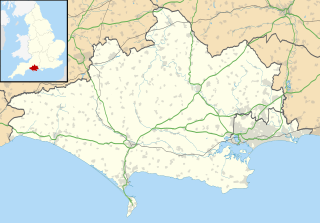 W
WThe Battle of Babylon Hill was an indecisive skirmish that took place between Royalist and Parliamentarian forces near Yeovil, in South West England, on 7 September 1642, during the early stages of the First English Civil War. The engagement occurred after a failed Parliamentarian siege of nearby Royalist-held Sherborne. After the Parliamentarians retreated to Yeovil, a force of around 350 Royalists was sent to reconnoitre their movements. Under the command of Sir Ralph Hopton, the Royalist detachment established itself on Babylon Hill, on the outskirts of Yeovil.
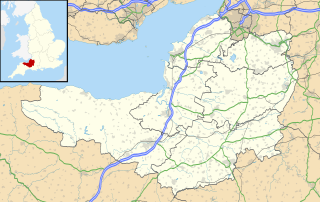 W
WThe Battle of Marshall's Elm was a skirmish that took place near Street, in the county of Somerset, South West England, on 4 August 1642. The engagement occurred during the build-up to formal beginning of the First English Civil War on 22 August, while the Royalists and Parliamentarians were recruiting men in the county. The Royalists had established their regional headquarters in Wells, but were threatened by superior Parliamentarian numbers in the vicinity. The Royalist commander sent out a mounted patrol consisting of 60 to 80 cavalry and dragoons, which came across a force of between 500 and 600 Parliamentarian recruits travelling north across the Somerset Levels under the command of Sir John Pyne.
 W
WThe Battle of Brentford was a small pitched battle which took place on 12 November 1642, between a detachment of the Royalist army under the command of Prince Rupert, and two infantry regiments of Parliamentarians with some horse in support. The result was a victory for the Royalists.
 W
WThe Siege of Chichester was a victory by Parliamentarian forces led by Colonel William Waller over a small Royalist garrison. The siege was one of the key events in the First English Civil War by Waller to secure southern England and declare it for Parliament. The siege lasted five days and ended with surrender by the Royalists. Despite the Royalist surrender, Waller's troops proceeded to sack and desecrate Chichester Cathedral.
 W
WThe Clergy Act (1640), also known as the Bishops Exclusion Act, or the Clerical Disabilities Act, was an Act of Parliament, effective 13 February 1642.
 W
WThe Battle of Edgehill was a pitched battle of the First English Civil War. It was fought near Edge Hill and Kineton in southern Warwickshire on Sunday, 23 October 1642.
 W
WThe Siege of Exeter (1642) or First Siege of Exeter took place during the First English Civil War from late December 1642 to early January 1643 when Royalists led by Sir Ralph Hopton attempted to capture the city and seaport of Exter from the Parliamentarians.
 W
WThe Storming of Farnham Castle occurred on 1 December 1642, during the early stages of the First English Civil War, when a Parliamentarian force attacked the Royalist garrison at Farnham Castle in Surrey. Sir John Denham had taken possession of the castle for the Royalists in mid-November, but after the Royalists had been turned back from London at the Battle of Turnham Green, a Parliamentarian force under the command of Sir William Waller approached the castle. After Denham refused to surrender, Waller's forces successfully stormed the castle. They captured it in under three hours, mostly due to the unwillingness of the Royalist troops to fight. This allowed the Parliamentarians to get close enough to breach the gates, after which the garrison surrendered.
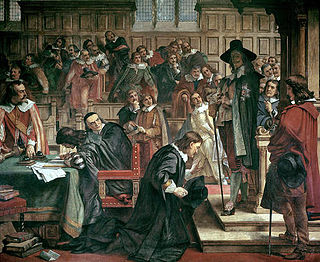 W
WThe Five Members were those five Members of Parliament whom King Charles I (1625–1649) attempted to arrest on 4 January 1642 when he entered the English House of Commons, accompanied by armed soldiers, during a sitting of the Long Parliament:John Hampden Arthur Haselrig (1601–1661) Denzil Holles (1599–1680) John Pym (1584–1643) William Strode (1598–1645)
 W
WThe Battle of Kings Norton was fought on 17 October 1642. The skirmish developed out of a chance encounter between Royalists under the command of Prince Rupert and Parliamentarians under the command of Lord Willoughby. Both forces had been on their way to join their respective armies which were later to meet at Edgehill in the first pitched battle of the First English Civil War. The Parliamentarians won the encounter and both forces proceeded to join their respective armies.
 W
WThe Militia Ordinance was passed by the Parliament of England on 15 March 1642. By claiming the right to appoint military commanders without the king's approval, it was a significant step in events leading to the outbreak of the First English Civil War in August.
 W
WThe Battle of Muster Green was a minor battle of major significance that took place during the first week of December 1642 on and around Muster Green in Haywards Heath during the first year of the First English Civil War. A Royalist army under Colonel Edward Ford, High Sheriff of Sussex, marching from Chichester to seize Lewes for the King encountered a smaller but more disciplined Parliamentarian army under Colonel Herbert Morley waiting for them on Muster Green.
 W
WOn 1 June 1642 the English Lords and Commons approved a list of proposals known as the Nineteen Propositions, sent to King Charles I of England, who was in York at the time. In these demands, the Long Parliament sought a larger share of power in the governance of the kingdom. Among the MPs’ proposals was Parliamentary supervision of foreign policy and responsibility for the command of the militia, the non-professional body of the army, as well as making the King’s ministers accountable to Parliament. Before the end of the month the King rejected the Propositions and in August the country descended into civil war.
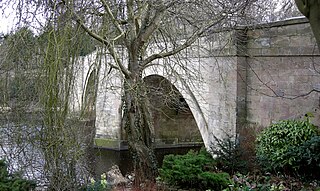 W
WThe Battle of Piercebridge was fought on 1 December 1642 in County Durham, England, during the First English Civil War. The Earl of Newcastle was advancing with an army of 6,000 from Newcastle upon Tyne to York to reinforce the local Royalists. Aware of his approach, the Parliamentarians defended the main crossing over the River Tees, at Piercebridge. Under the command of Captain John Hotham, around 580 troops had barricaded the bridge.
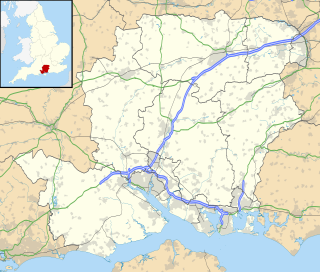 W
WThe Siege of Portsmouth was the siege of a Royalist garrison in Portsmouth by a Parliamentarian force conducted in the early part of the First English Civil War. The siege resulted in Portsmouth falling to Parliament after a little under a month of conflict.
 W
WThe Battle of Powick Bridge was a skirmish fought on 23 September 1642 just south of Worcester, England, during the First English Civil War. It was the first engagement between elements of the principal field armies of the Royalists and Parliamentarians. Sir John Byron was escorting a Royalist convoy of valuables from Oxford to King Charles's army in Shrewsbury and, worried about the proximity of the Parliamentarians, took refuge in Worcester on 16 September to await reinforcements. The Royalists despatched a force commanded by Prince Rupert. Meanwhile, the Parliamentarians sent a detachment, under Colonel John Brown, to try to capture the convoy. Each force consisted of around 1,000 mounted troops, a mix of cavalry and dragoons.
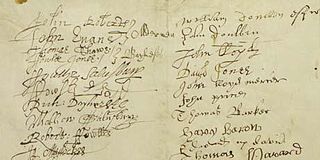 W
WThe Protestation Returns of 1641–1642 are lists of English males over the age of 18 who took, or did not take, an oath of allegiance "to live and die for the true Protestant religion, the liberties and rights of subjects and the privilege of Parliaments." These lists were usually compiled by parish, or township, within hundred, or wapentake. They are of importance to local historians for estimating populations, to genealogists trying to find an ancestor immediately before the English Civil War and for scholars interested in surname distributions.
 W
WThe first Siege of Hull marked a major escalation in the conflict between King Charles I and Parliament during the build-up to the First English Civil War. Charles sought to secure the large arsenal held in Kingston upon Hull, East Riding of Yorkshire. He first approached the town in late April 1642, but was rebuffed by the town's Parliamentarian governor, Sir John Hotham. Charles retreated to York, but in July he received news that Hotham might be willing to hand over the town if the Royalists approached with a large enough force that Hotham could surrender with his honour intact.
 W
WThe Siege of Reading was an eleven-day blockade of Reading, Berkshire during the First English Civil War. Reading had been garrisoned by the Royalists in November 1642, and held 3,300 soldiers under the command of Sir Arthur Aston. On 14 April 1643, Robert Devereux, 3rd Earl of Essex brought a Parliamentarian army of 19,000 men to lay siege to the town, and began bombarding the town two days later.
 W
WThe Battle of Tadcaster took place during the First English Civil War on 7 December 1642, when a Royalist force attacked the Parliamentarian garrison of Tadcaster, Yorkshire, which was held by between 900 and 1,500 soldiers under the command of Ferdinando Fairfax, Lord Fairfax. Newcastle marched out of York on 6 December, and split his force of 6,000 into two; he took 4,000 infantry down the main York–Tadcaster road to attack the town from the east, while sending a deputy, the Earl of Newport, with a further 1,500 to circle around and trap the Parliamentarians by attacking from the north-west.
 W
W"To Althea, from Prison" is a poem written by Richard Lovelace in 1642. The poem is one of Lovelace's best-known works, and its final stanza's first line "Stone walls do not a prison make, Nor iron bars a cage" is often quoted. Lovelace wrote the poem while imprisoned in Gatehouse Prison adjoining Westminster Abbey due to his effort to have the Clergy Act 1640 annulled.
 W
WThe Triple Unite, valued at sixty shillings, 60/- or three pounds, was the highest English denomination to be produced in the era of the hammered coinage. It was only produced during the English Civil War, at King Charles I's mints at Oxford and, rarely, at Shrewsbury in 1642. It weighed 421 grains.
 W
WThe Battle of Turnham Green took place on 13 November 1642 near the village of Turnham Green, at the end of the first campaigning season of the First English Civil War. The battle resulted in a standoff between the forces of King Charles I and the much larger Parliamentarian army under the command of the Earl of Essex. In blocking the Royalist army's way to London immediately, however, the Parliamentarians gained an important strategic victory as the standoff forced Charles and his army to retreat to Oxford for secure winter quarters.